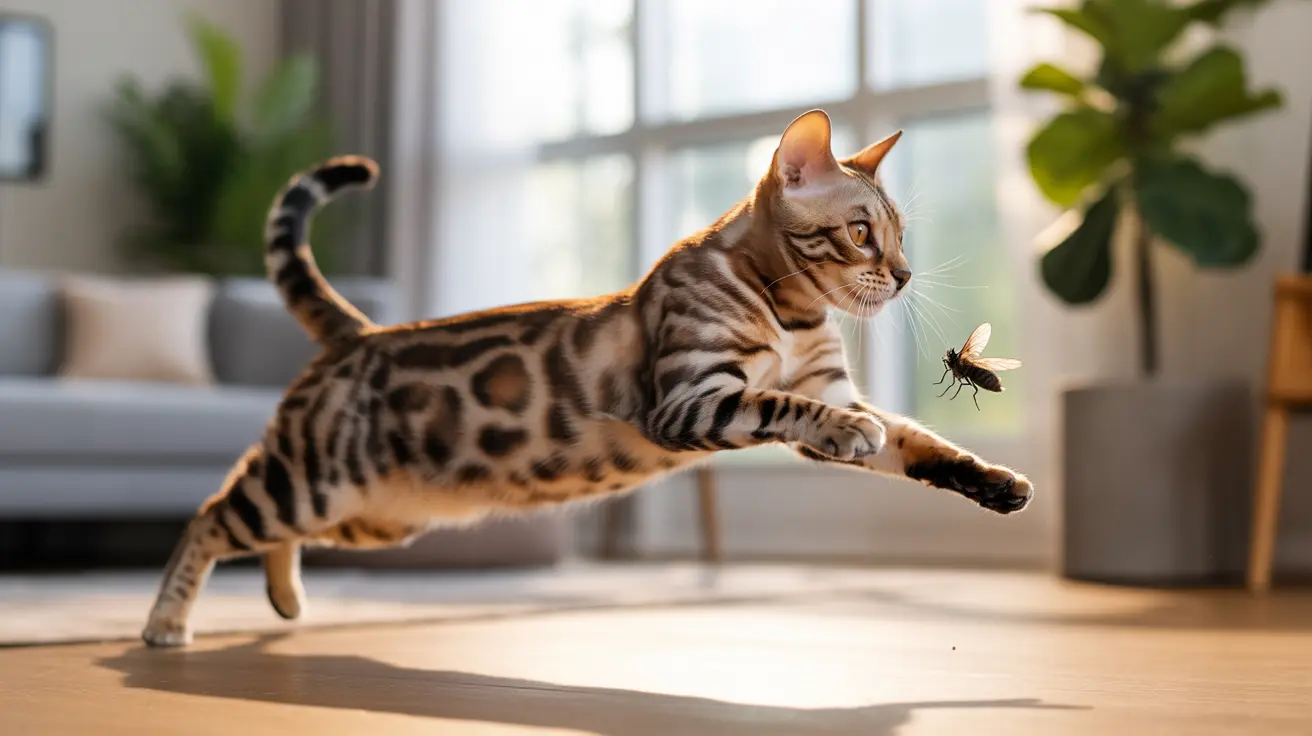Understanding Why Cats Hunt and Eat Flies
Cats are instinctive predators, and their attraction to flying insects is deeply rooted in their natural hunting behaviors. The erratic movement of flies triggers their prey drive, making these insects particularly enticing targets. For indoor cats especially, fly-chasing can provide both mental stimulation and physical exercise.
Common Health Risks When Cats Eat Flies
While eating a single fly rarely causes problems for healthy cats, there are several potential risks to consider:
Bacterial and Parasitic Infections
Flies can carry various pathogens and parasites that may cause digestive issues in cats. While a healthy cat's immune system typically handles these well, kittens and elderly cats may be more vulnerable to infection.
Pesticide Exposure
The primary concern comes from flies that have been exposed to insecticides or other toxic substances. Even small amounts of certain chemicals, particularly permethrin, can be dangerous to cats.
Signs Your Cat May Need Veterinary Care
Monitor your cat for these symptoms after they've eaten a fly:
- Persistent vomiting or diarrhea
- Excessive drooling
- Lethargy or unusual behavior
- Loss of appetite
- Tremors or seizures
- Difficulty breathing
Prevention and Safety Measures
To protect your cat while allowing them to express their natural behaviors:
- Use pet-safe insect control methods
- Keep your home clean to minimize fly presence
- Provide alternative hunting outlets through interactive toys
- Maintain regular veterinary check-ups and deworming schedules
- Install proper window screens to reduce indoor fly populations
Frequently Asked Questions
What happens if my cat eats a fly—should I be worried?
Generally, eating a single fly isn't cause for concern in healthy cats. However, monitor your cat for unusual symptoms, particularly if the fly may have been exposed to pesticides.
Can eating flies cause health problems like vomiting or diarrhea in cats?
Yes, flies can potentially carry bacteria or parasites that may cause digestive issues. Most cases are mild and resolve on their own, but persistent symptoms warrant veterinary attention.
Are there risks of parasite or insecticide poisoning when cats eat flies?
While rare, cats can be exposed to parasites or toxic substances through flies. The biggest risk comes from flies that have contacted pesticides, especially those containing permethrin.
What symptoms indicate my cat needs a vet after eating a fly?
Seek veterinary care if you notice persistent vomiting, diarrhea, tremors, seizures, difficulty breathing, or significant behavioral changes.
How can I prevent my cat from catching and eating potentially harmful flies?
Reduce fly populations in your home through proper sanitation, install window screens, use pet-safe pest control methods, and provide alternative hunting outlets through toys and play sessions.
Conclusion
While cats eating flies is generally harmless, being aware of potential risks and symptoms helps ensure your pet's safety. Focus on prevention through environmental management and provide appropriate alternatives for their hunting instincts. When in doubt about your cat's health after consuming insects, consult with your veterinarian for professional guidance.






